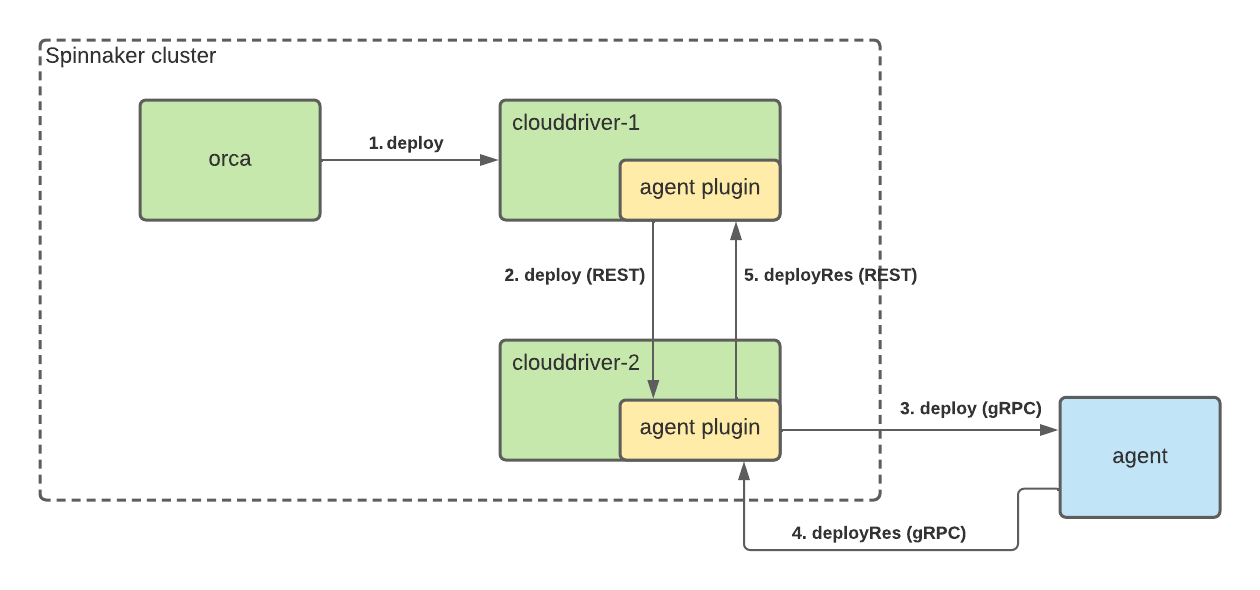Armory Scale Agent Communication With Clouddriver Instances in Kubernetes
How the Armory Scale Agent plugin communicates with Clouddriver instances

At startup, Clouddriver registers a watch for the kind Endpoints in the Kubernetes cluster where it is running for the namespace where Clouddriver is running. Objects of kind Endpoints are automatically generated based on a Kubernetes Service. The plugin knows that there’s a Clouddriver Service for routing HTTP traffic to Clouddriver pods (usually named spin-clouddriver). This means that the Clouddriver pod needs to mount a Kubernetes Service Account that has permissions to list and watch the kind Endpoints in the current namespace. The Agent plugin does the equivalent of these calls at startup:
kubectl auth can-i list endpoints
kubectl auth can-i watch endpoints
If permissions are in place, the plugin then does the equivalent of this call:
kubectl get endpoints
From the returned collection, the plugin filters the entries based on these conditions:
- The endpoint Name should have the prefix
spin-clouddriver. This is configurable and is a prefix to be able to match several entries like the ones used in HA. - Each entry should have a port named
http, which is configurable. This is to be able to differentiate between the port that Clouddriver uses to receive REST requests and the port it uses to listen for gRPC connections from Agent.
Information about discovered Clouddriver instances is kept in memory on each Clouddriver pod and is automatically updated by the watch mechanism. No polling is needed. The Kubernetes API server notifies the plugin when there are any changes.
Operation request and response forwarding
When a Clouddriver instance receives an operation for an account or Agent that is registered to a different Clouddriver instance, the plugin uses a combination of a database table and an in-memory map to determine where to forward the operation. Forwarding is done via REST requests.
Exposed endpoints
GET <clouddriver host:port>/armory/clouddriversSample response:
[ { baseUrl: "http://10.0.15.246:7002", id: "spin-clouddriver-766c678c6c-scg68", lastUpdated: "2022-02-23T20:41:39.333Z", ready: true } ]The field
readymatches the columnReadyofkubectl -n <spinnaker ns> get podsfor Clouddriver pods.POST <clouddriver host:port>/armory/agent/operationsSample request body:
{ "operation": "<toString() of protobuf Operation object>" }POST <clouddriver host:port>/armory/agent/operationresultsSample request body:
{ "result": "<toString() of protobuf OperationResult object>" }
Feedback
Was this page helpful?
Thank you for letting us know!
Sorry to hear that. Please tell us how we can improve.
Last modified March 3, 2023: (2d069084)